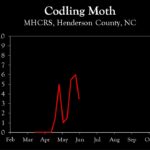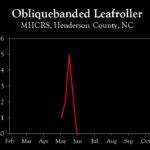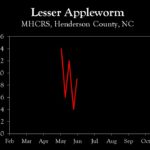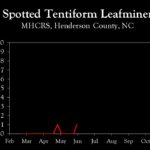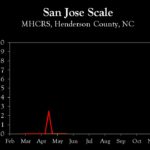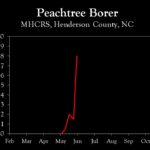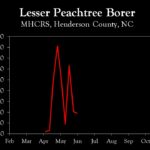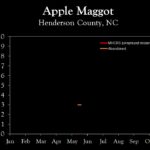WNC Orchard Insect Pest Populations – June 2, 2025
go.ncsu.edu/readext?1075843
en Español / em Português
El inglés es el idioma de control de esta página. En la medida en que haya algún conflicto entre la traducción al inglés y la traducción, el inglés prevalece.
Al hacer clic en el enlace de traducción se activa un servicio de traducción gratuito para convertir la página al español. Al igual que con cualquier traducción por Internet, la conversión no es sensible al contexto y puede que no traduzca el texto en su significado original. NC State Extension no garantiza la exactitud del texto traducido. Por favor, tenga en cuenta que algunas aplicaciones y/o servicios pueden no funcionar como se espera cuando se traducen.
Português
Inglês é o idioma de controle desta página. Na medida que haja algum conflito entre o texto original em Inglês e a tradução, o Inglês prevalece.
Ao clicar no link de tradução, um serviço gratuito de tradução será ativado para converter a página para o Português. Como em qualquer tradução pela internet, a conversão não é sensivel ao contexto e pode não ocorrer a tradução para o significado orginal. O serviço de Extensão da Carolina do Norte (NC State Extension) não garante a exatidão do texto traduzido. Por favor, observe que algumas funções ou serviços podem não funcionar como esperado após a tradução.
English
English is the controlling language of this page. To the extent there is any conflict between the English text and the translation, English controls.
Clicking on the translation link activates a free translation service to convert the page to Spanish. As with any Internet translation, the conversion is not context-sensitive and may not translate the text to its original meaning. NC State Extension does not guarantee the accuracy of the translated text. Please note that some applications and/or services may not function as expected when translated.
Collapse ▲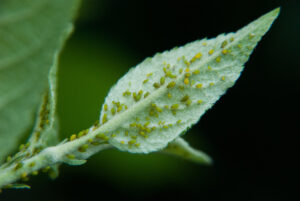 In orchards at elevations of about 2000 ft or higher (e.g., Henderson County), this week should see the last major codling moth activity of the first generation. At lower elevations (Cleveland Co.) the first generation is essentially complete and now is a time when insecticide use can typically be held back.
In orchards at elevations of about 2000 ft or higher (e.g., Henderson County), this week should see the last major codling moth activity of the first generation. At lower elevations (Cleveland Co.) the first generation is essentially complete and now is a time when insecticide use can typically be held back.
Codling Moth: As of today (6/2), approximately 580 DD have accumulated since biofix in Henderson County. A second flush of moth activity often occurs between now and 650 DD, which will occur later this week. If not monitoring flight with pheromone traps, it should be assumed that a potentially damaging population exists.
Almost 900 DD have accumulated in Cleveland County and similar locations, and first generation flight is nearly complete. Unless pheromone trap captures are high or there is already evidence of damage, it is unlikely that further management actions will be necessary until second generation flight at about 1400 DD.
TABM: Tufted apple bud moth degree-day accumulations are at 850 DD in Henderson County, which is ideal timing for an insecticide application for season-long control of this pest. Since insecticides effective against codling moth also provide excellent TABM control, both can be controlled with the recommended products (below). There is about a 3-week window for controlling TABM, which in Henderson County ranges from last week through next week.
In those orchards using mating disruption for codling moth, and where to date supplemental control for codling moth has not been necessary, an insecticide for TABM should be made at this time. If codling moth is not a concern, Intrepid at 8 oz per acre is an option that will provide excellent control of TABM. However, if concerned about codling moth, a diamide (Altacor, Exirel or Verdepryn) or spinosyn (Delegate), depending on your rotational program, should be used.
Other Pests: As mentioned last week, June is the time when populations of common secondary pests – European red mite, aphids and leafhoppers – begin to increase, so monitoring for these pests should be underway.
Learn more about southeastern apple insect pests at the Apple Insect Management page.
2025 Average Weekly Trap Captures
| HENDERSON COUNTY | |||
| Insects per trap | |||
| May 19 | May 27 | June 2 | |
| Codling moth | 5.5 | 6.0 | 3.5 |
| Oriental fruit moth | 13.5 | 7.0 | 15.0 |
| Tufted apple bud moth | 42.0 | 70.0 | 38.0 |
| Redbanded leafroller | 0.0 | 2.0 | 20.0 |
| Obliquebanded leafroller | 5.0 | 2.0 | 0.0 |
| Lesser appleworm | 12.0 | 4.0 | 9.0 |
| Apple maggot (unsprayed research orchards) | set | 0.0 | 0.0 |
| Apple maggot (abandoned orchard) | set | 3.0 | 3.0 |
| Brown marmorated stink bug (commercial orchards) | 1.2 | 0.6 | 1.0 |
| Brown marmorated stink bug (unsprayed research orchards) | 1.0 | 0.3 | 0.3 |
| Spotted tentiform leafminer | 0.0 | 0.0 | 1.0 |
| Dogwood borer | 48.0 | 110.0 | 58.0 |
| Peachtree borer | 2.0 | 1.5 | 8.0 |
| Lesser peachtree borer | 63.0 | 20.5 | 19.0 |
| San Jose scale | 1.7 | 0.0 | 0.0 |
*Note that these averages illustrate only the timing of insect emergence and fluctuations in populations, and are not representative of population levels in any given orchard. The only way to have an accurate assessment of an individual orchard’s populations is to set up traps in that orchard.
2025 Accumulated Degree Days
| HENDERSON COUNTY | ||||
| May 19 | May 27 | Jun 2 | ||
| Codling moth (Biofix: April 21) | 391 | 502 | 578 | |
| Oriental fruit moth (Biofix: March 17) | 920 | 1069 | 1175 | |
| Tufted apple bud moth (Biofix: April 14) | 598 | 747 | 853 | |



